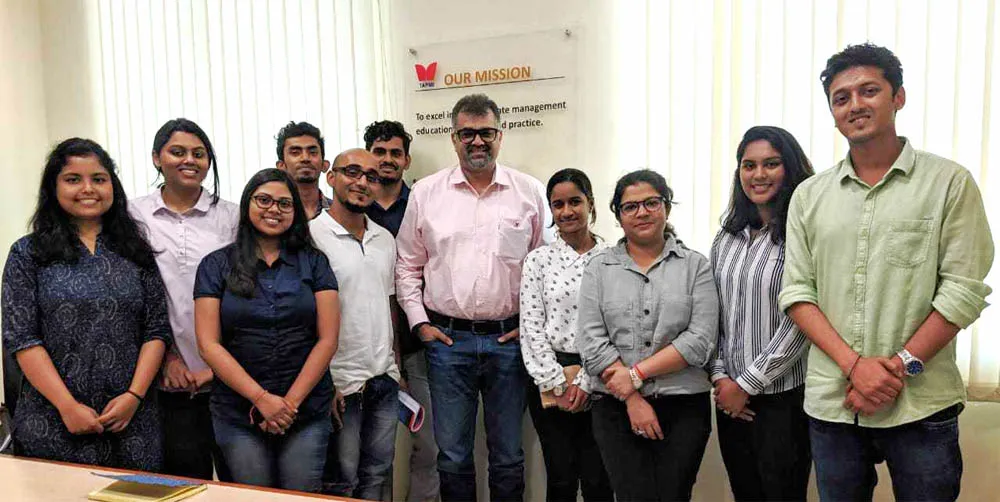There’s no dearth of places where you can find leadership- it can be a young kid. You can see a leader in a lot of people, in a lot of places – Mr. D N Prasad | Founder, NoeticStep and Ex-Director, People’s Services, Google India
The cohort interaction began with Mr. D N Prasad (or DNP, as he’s fondly known in the industry), began on a candid note with him explaining why he took up the opportunity to interact with the students of TAPMI’s HR batch, apart from the very reason of him being from1997-1999 TAPMI batch himself. He explained that about 20 years ago, TAPMI’s HR specialization was about to be scrapped due to some institutional reasons, and from there to having a batch of its own, HR has come a long way in TAPMI. And being one of the advocates of the program 20 years ago, he felt it was almost symbolic that he’d come and interact with the HR cohort.
Moving on to taking questions from the students, the very first question- a quite obvious one at that- was what traits constitute a leader? Mr. Prasad then let the students name various people they considered good leaders and the reason they chose that particular figure. The students gave various responses- some named their fathers for the sheer empathy they had, some said their mother because of the never-ending courage she displays on a daily basis, and some students named popular figures like Barack Obama and Eminem- for their charm and valor! Other collective reasons behind the choices included being trustworthy, instilling belief and values in people, bravery and the ability to accept curveballs life throws at them. Mr. Prasad then told the cohort that they’d answered their own questions- all these qualities are the traits of a leader.
“Be agile. And remember,” he addressed the group, “a leader also knows that ‘a leader doesn’t have to always lead’; s/he should always know when to step back.”
Another question that was asked by one of the students circled around the importance of being visible on social media and being a charismatic leader, and the relationship between the two. “It’s a simple difference,” Mr. Prasad said, “I don’t read charismatic leaders’ tweets, I read the tweets written about them.” That said, he remarked that social media is a necessary evil now but advised students to be extremely responsible with it and not overdo anything online. “If possible,” he suggested, “create separate IDs for personal and professional versions of yourself. Use LinkedIn for what it is, not to connect with your friends. Similarly, don’t use Facebook to build formal relationships.”
One student wanted to know about Mr. Prasad’s key takeaways, with respect to being a leader, during his TAPMI days. Mr. Prasad then reflected back on his memories, over 20 years ago. “As a Brandite (a member of the BrandScan Committee of TAPMI), I had to lead over 30 people during the elections and that was like running a successful business,” he added, “it was like gaining real work experience for that year. That was my own leadership journey.”
As an advice to the budding leaders, he asked the cohort to keep growing during their time in TAPMI, not just as a manager, but also as a human being. “It’s easy to get sidetracked with being blinded by CGPA, academics and placements, but in the long term, those are not the only things that matter. They’re important, but so are a lot aspects of a B School. You’re here to learn.”
Ending the discussion with speaking about being an effective leader in a contingency and being a leader in a new team with a lot of uncertainty, he said that a lot of effort should be put into building a connect with the team. It’s imperative that the connect is there before the team decides to dive into the task- and post the connect, everyone’s skills should be assessed, including their pain points so that it becomes easy to perform as a group. And that’s what makes for effective transformational leadership.








